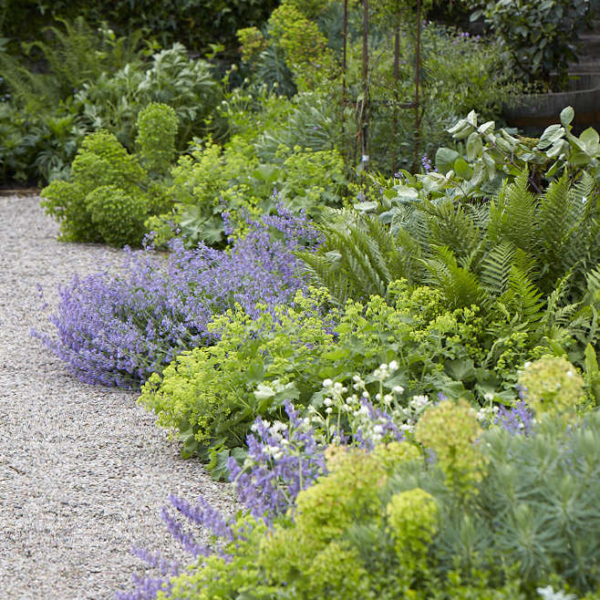From cherry blossoms in December to spring bulbs in January, I’ve seen some flowers bloom exceptionally early. If you’ve also seen some early blooms, you might be worried about how this will affect your plant when it inevitably gets cold again. Here’s what you need to know about early blooming flowers.
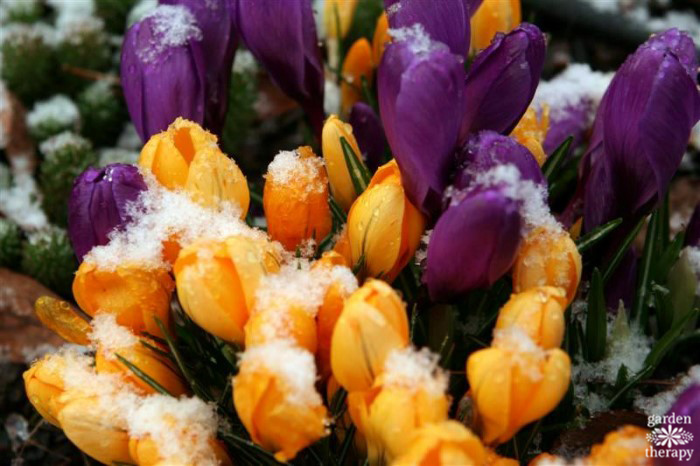
It’s been a weird winter here in Vancouver. For a while, we had a very, very, cold snap. Then quickly, it warmed up and turned bright and sunny…only to get cold again.
I saw cherry blossoms in December—which doesn’t usually happen until late February.
I’m confused. The plants are confused. We’re all confused.
All across the world, we have been seeing extremes. So it’s no wonder I’ve been seeing lots of questions from gardeners about what will happen to their plants if they see early blooms.
If you’re concerned about early blooming flowers, join me as we look at the plant’s life cycle and what will happen to your plants should they sprout a wee bit early.
Why Are Plants Blooming Earlier?
It’s getting harder and harder for some (I won’t name names) to deny that the climate is changing. We will see very unusual things happening with the weather, and the plants will respond to it.
Some areas are seeing more prolonged periods of drought, while others have heavy rainfall. We may have a cold, severe winter, but they’re getting less frequent as these mild winters creep up on us.
Because of these temperatures, we’re seeing longer growing periods with an earlier last frost date and a later first frost date. In the US, the growing season has increased by more than two weeks compared to the beginning of the 20th century in 48 states. In the UK, flowers bloom an average of 26 days earlier than in the 1980s.
The plants are getting the message loud and clear. They’re responding to the climate the best way they know how, one of which is early blooms.
As the climate changes, the plants are also changing. Anything that’s a perennial, like trees, shrubs, perennials, and bulbs, will continue to evolve. The strongest plants will be the ones to survive this.
The next generation of plants will create their future. The plants will become hardier in these conditions as the climate changes. The weaker ones may not make it, but the stronger ones do.
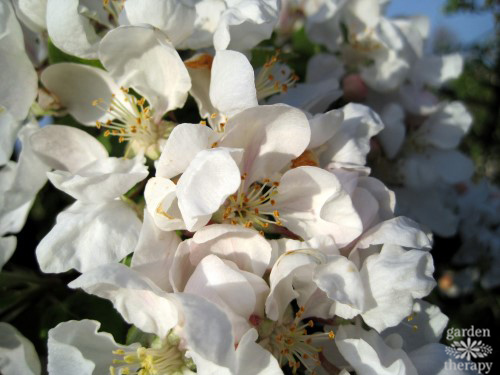
A Plant’s Life Cycle
It’s always important to consider the plant’s life cycle, like what we do in pruning. Most plants go dormant in the winter by dropping leaves, stopping flowering, and devoting their energy to the root system.
That goes for most plants, like perennials, trees, bulbs, and even our edible vegetable plants.
When shoots come up early, remember that very little of the overall plant energy is above the soil line.
If it cools down again and there’s damage to the plant, most of it is still safe under the soil. There may be some damage to the above plant material, but the rest should be fine.
There may be some gnarly leaves and fewer flowers. She may not be looking her best. But know that she’s looking beautiful beneath the soil and will survive just fine.
Place your trust in the plants. Observe, but try not to worry. You can’t do much—it’s in the plant’s hands!
What Happens to Perennials Blooming Early?
Perennials can pop up early when they see the cues of spring. But once it freezes again, the plant’s energy will retreat to the root system.
The plant isn’t fully developed above the soil, but it can still withstand some damage to the upper part of the plant. It’s rare that any of that damage will go down to the root.
Soil is very insulating and will help maintain a temperature the plant is hardy to. If you planted it in the right space, that is.
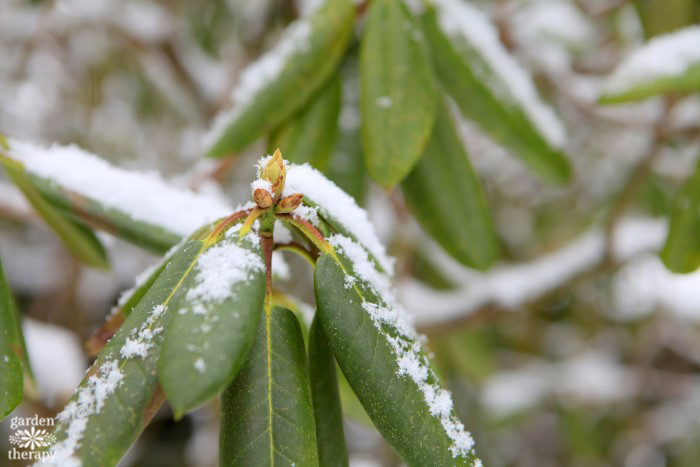
Early Blooming Flowers on Trees
Generally, the leaf buds will be okay on trees. Trees send out many leaf buds early in the season when it’s cold. If they lose some, the tree will be okay.
Flower buds, however, tend not to bounce back as easily.
This year, we had cherry blossoms blooming exceptionally early in Vancouver due to a mild winter. I anticipate that they aren’t going to flower as prolifically this spring. Since they tried to flower early, they likely won’t set out a second flowering.
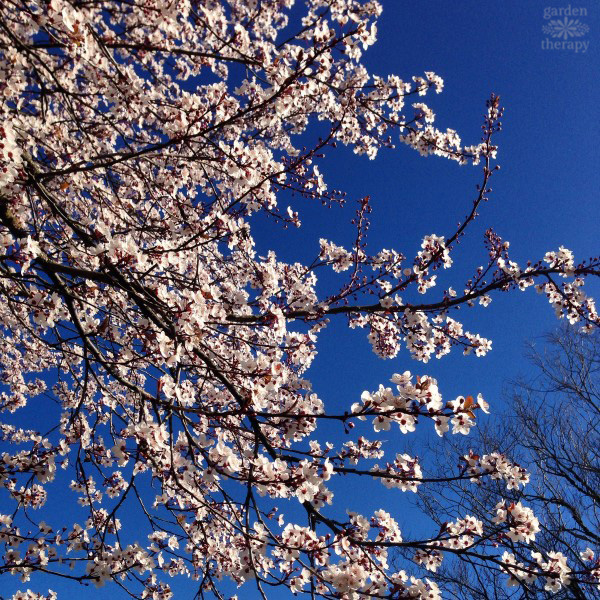
Early Blooms from Flower Bulbs
Bulbs are very used to this seesaw of warm and cold temperatures. Bulbs store all their energy under the soil. Within the bulb, there is enough energy for the plants to grow before there’s much spring sun.
The shoots will begin to pop up when it feels right. Generally, most bulbs don’t mind the cold. Some, like snowdrops and crocuses, even thrive in the snow. Bulbs have very strong root systems that help them bounce back in cold conditions.
The shoots may die off when it gets cooler again. But that’s fine. In the end, you could end up with fewer bulbs that are less robust and not as strong. This is more likely if there is a late freeze and most of the plant has already sprung up.
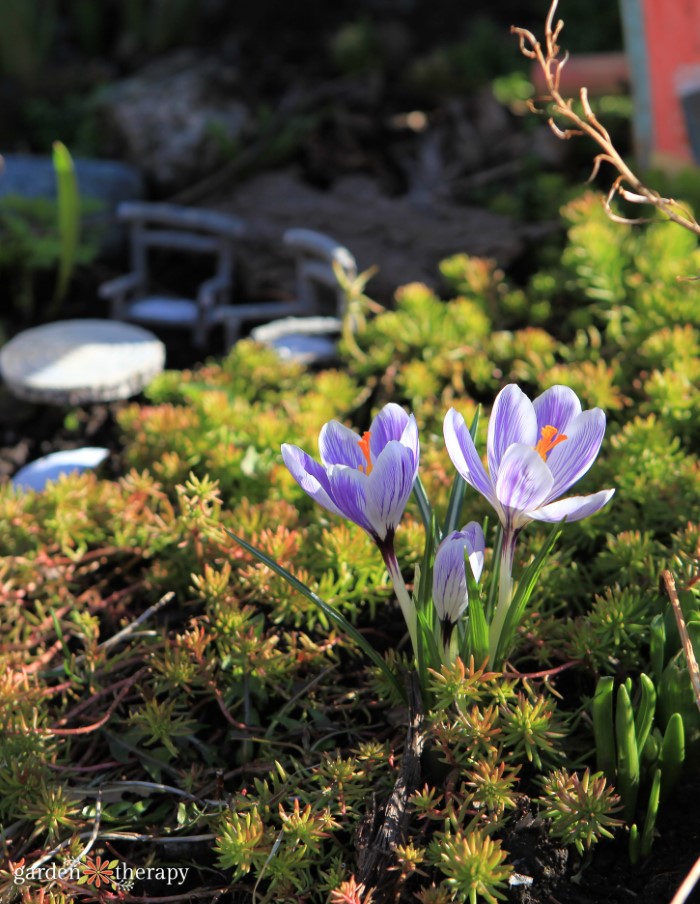
Dealing With Vegetable Plants That Freeze
Some vegetables don’t mind cool temperatures. Imagine you didn’t cover your Swiss chard or kale, and it froze so much that it wilted and died back instead of getting sweeter (which we all hope will happen).
Those vegetables tend to grow back again. They might not grow back as much as before, but anything under the soil will be okay.
So your root vegetables, like parsnips, beets, or carrots, will be doing great underneath the soil, even if the cold damages the leaves above the soil.
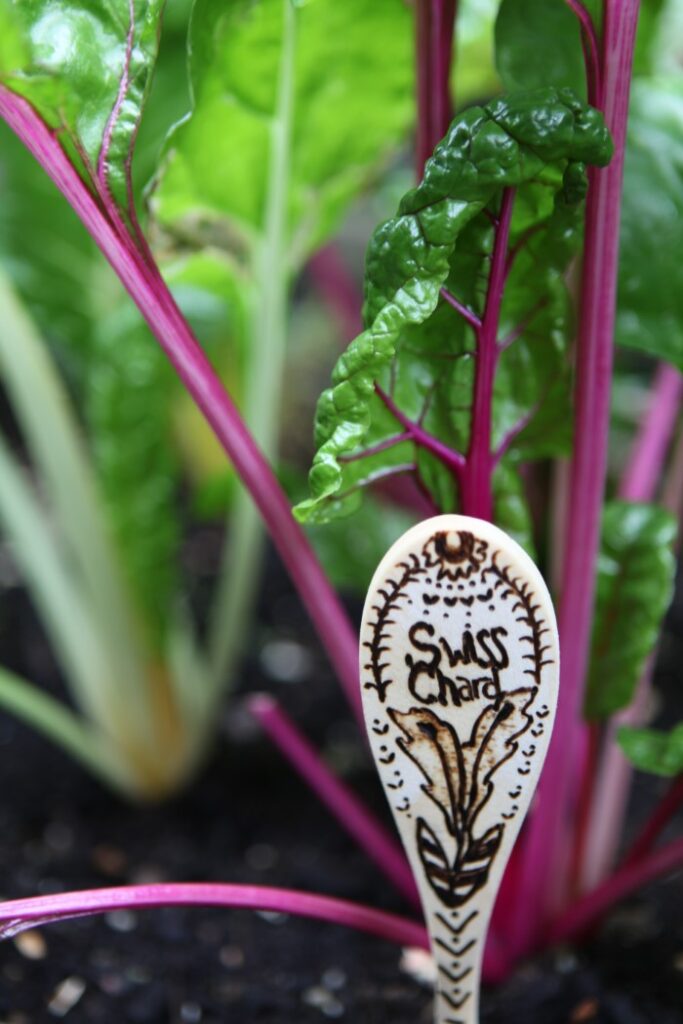
FAQ About Handling Early Blooms
What happens if my garlic blooms early in the fall?
We plant garlic in the fall (I always do so around Halloween). Sometimes, you can plant it a little too early or have a warmer-than-usual fall, and the garlic will send up shoots in the fall.
When it freezes, the garlic will die back. But don’t worry; the garlic will start the whole process again in the spring.
You can even plant garlic with shoots growing on it, like when you buy them a little late. This won’t affect your garlic overall.
Yes, there is a gold standard when it comes to garlic. Garlic growers won’t want shoots affected by the freeze or provide any stress to the plant as that can affect the overall robustness of the plant.
But will you still get garlic? Absolutely.
What happens if it’s a late freeze?
Let’s say it’s late spring and starting to get to summer, and we suddenly have an unexpected freeze. In this case, the plant’s chance of survival would drop.
At this point, most of the energy the plant is expelling is now on the upper part of the plant and not beneath the soil where it is protected.
Most perennials will bounce back, but the damage may be more significant if they are further down in their seasonal growth.
How are bees affected by earlier flowering plants?
Rising temperatures and earlier springs will mean that bees will wake up earlier. It’s estimated that they wake up five days earlier than twenty years ago.
With more species blooming at the same time than in the past, there isn’t such a continuous, even supply of flowers for the bees. This mismatch between when the flowers and bees are active could threaten the bees looking for food sources.
This will also reduce plant pollination and their ability to reproduce and yield crops. Rising temperatures may also mean the bees come out earlier, but they need their timing to align with the flowers to avoid being affected.
Why do some plants bloom earlier than others?
Each plant (or seed or bulb) will respond to different environmental factors, such as temperature, amount of sunlight, light quality, and more.
As these conditions change, chemical production inside the plant triggers the growth. In response, the plant will begin to sprout new growth.
Many plants start growing when temperatures get warmer or the days get longer. Each plant will have specific responses, some needing higher temperatures or more light before growing. Others require less.
Likewise, cooler temperatures can tell the plant to redirect the energy back to the roots, set seed, and die back for the fall.


